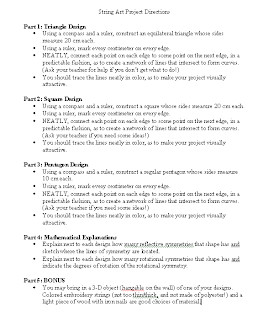I am always interested in finding out how people ended up where they are. I myself have always been surprised with the jobs I actually end up with.
After college, I thought I was for sure going to go work for Intuit (the guys that make your TurboTax software). I had had a successful internship with them the summer prior, and since I was pretty sure software was just a temporary gig until I figured out what I wanted to do with my life, it made sense to stay in California.
But, you know, all of my other engineering friends were going to on-campus job fairs the spring of my senior year and looking at interviewing with big companies, so I figured why not. I sent in some resumes and got a first round of interviews with Amazon.com, followed by a second round of all-day interviews on campus. It was sort of...
exciting. I did it because I had nothing to lose (since I already had a job offer from Intuit), and I kind of liked writing code on the spot and discussing data structures with strangers. (In a totally geeky way, interviewing was really fun.)
Once Amazon decided to give me an offer, they flew me and some other people out to Seattle to visit their company site. As it turned out (as it always turns out), it was love-at-first-sight with me and Seattle. My boyfriend at the time was clearly non-committal about staying with me for the long term, so I decided that moving was clearly the right move for myself.
Two years later, I was a pretty happy programming monkey at Amazon (I had an amazing boss, a great boss's boss, and my best friend sat 3 feet from me), but I decided I had figured out what I wanted to do with my life -- teaching. I was so excited actually, that I couldn't sleep at night.
And so began my research into teaching options. I pretty much figured right away that some things, such as going back to school full-time, just weren't for me. In my research, I encountered some programs like TFA and the New York City Teaching Fellows that offered you the opportunity to teach
while getting certified. That seemed to me like the way to go. So, I went ahead and applied. Long story short, I ended up in NYC, looking for jobs during the first summer immersion training.
My former principal liked to tell the story about how I basically
stalked him. It's more or less true. I had interviewed with only a handful of schools, but nothing really was working out. (My demo lessons pretty much sucked.) Eventually, somewhere on insideschools.org, I came across a review of a new small 6th-through-12th-grade school called
MS 241. The principal called me once, and then I called him about 10 times. Never got through, so I went and found him at a job fair. Sort of a fluke sort of thing, but I knew he was the person I wanted to work for as soon as I sat down with him. The school he described to me sounded like a
dream. Kids learned by playing, kids learned math and science that were
real and
active. And, miraculously, after a demo lesson, this amazing school still wanted to hire me.
In the three years that followed, I learned more about teaching than I probably ever will in any stretch of 3 years in my career. I have little doubt that that school has some of the most incredible staffers anywhere in New York. (And trust me, I know there are a lot of good teachers in NYC.)
When I decided that I wanted to do the international teaching thing, Geoff and I agreed that for the first few years, we'd stay in relatively the same time zone. He needed a few more years to get his self-run company to a point where he wouldn't need to be available everyday from 9 to 5. So, I began contacting every Latin American school I could find. El Salvador was, funnily enough, the first school to show serious interest in hiring me, after receiving my cold email contact. They were willing to offer me a job even without having met me in person.
Like any sensible person who has already jumped through the hoops of registering for a recruitment fair, I postponed accepting their offer in order to check out other schools. In the end, however, after sifting through all the offers on the table and talking to each school administrator about the complication of having a non-teaching "spouse" who might bring about visa issues, the school in El Salvador still seemed to be the best fit. (Funny how life works.) :) And we're both very glad we had made that decision; this school has been very good to me, and more than accomodating about my situation with Geoff.
I can only hope that the next place will be a blessing the same way that every other employer has been. Job searching is so exciting! And so scary. I could be throwing my whole life away, or not.






















































